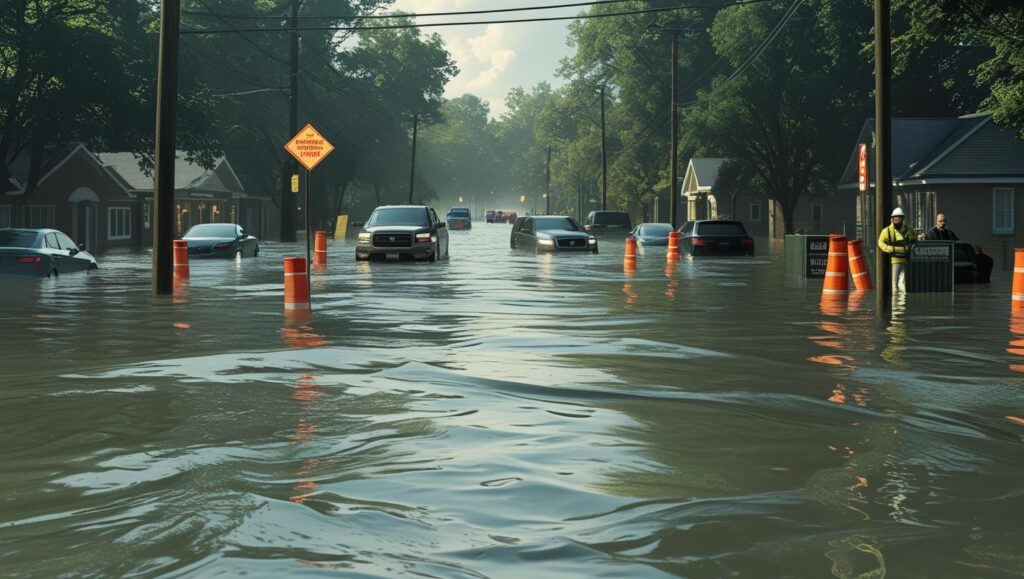
Extreme Rainfall Alert 2025 – Flood Warnings & Safety Tips
India faces extreme rainfall alerts with deadly flood risks. Learn IMD warnings, safety tips, and government measures to stay protected in 2025.
Introduction
In 2025, India and many other countries are witnessing a dramatic increase in extreme rainfall events, leading to floods, landslides, and urban waterlogging. The India Meteorological Department (IMD) has issued multiple red and orange alerts across states like Maharashtra, Gujarat, Kerala, and Uttarakhand. For citizens, this means understanding what these alerts mean, how to stay safe, and what preventive steps the government is taking.
This article will cover everything you need to know about extreme rainfall alerts—from causes and impacts to safety tips and climate change connections.
What is an Extreme Rainfall Alert?
The IMD issues rainfall alerts using a color-coded warning system:
- Green: No warning. Normal conditions.
- Yellow: Be aware. Heavy rain likely in some areas.
- Orange: Be prepared. Severe rainfall with possible flooding.
- Red: Take action. Extremely heavy rainfall expected with high risk of flooding and damage.
👉 According to the India Meteorological Department, an extreme rainfall alert is issued when rainfall exceeds 204.5 mm in 24 hours in a particular region.
Why Extreme Rainfall is Increasing in 2025
Experts link rising extreme rainfall events to climate change. Warmer oceans fuel stronger monsoons, while urbanization, deforestation, and poor drainage make cities more vulnerable.
- Climate Change: Global warming increases evaporation, which leads to heavier downpours.
- Urban Flooding: Poor drainage in cities like Mumbai and Bengaluru worsens the situation.
- Deforestation: Lack of tree cover leads to landslides in hilly states like Himachal Pradesh and Uttarakhand.
- El Niño Effect: Global weather patterns such as El Niño disrupt monsoon distribution.
Regions Under Extreme Rainfall Alert in 2025
- Maharashtra (Mumbai, Konkan belt): Red alerts due to flooding risk.
- Gujarat (Saurashtra & Kutch): Heavy rainfall disrupting agriculture.
- Uttarakhand & Himachal Pradesh: Flash floods and landslides.
- Kerala: Extreme waterlogging in Kochi and low-lying areas.
- Northeast India (Assam & Meghalaya): River overflow and displacement.
📌 According to the National Disaster Management Authority (NDMA), urban flooding is now one of India’s biggest challenges during monsoons.
Impact of Extreme Rainfall on Daily Life
- Transport Disruptions: Trains, flights, and metro services get suspended.
- Power Outages: Flooding affects electricity supply.
- Health Risks: Rise in waterborne diseases like cholera and dengue.
- Economic Loss: Agriculture, businesses, and industries face damages.
- Human Displacement: Thousands evacuated to relief camps.
Safety Tips During Extreme Rainfall
If you live in a flood-prone area, here’s what you should do:
- Stay Informed: Follow IMD & local authority updates.
- Avoid Waterlogged Areas: Electrocution and open drains pose hidden dangers.
- Stock Essentials: Drinking water, food, medicines, power banks.
- Turn Off Electricity: In case of flooding inside your home.
- Emergency Kit: Keep documents, flashlight, and first aid ready.
- Travel Smart: Avoid unnecessary travel during red alerts.
👉 Check NDMA Flood Preparedness Guide for official safety tips.
Government Measures to Tackle Extreme Rainfall
- NDMA & SDRF Deployments: Rescue teams stationed in vulnerable regions.
- Weather Radar Expansion: IMD expanding Doppler radar coverage.
- Urban Drainage Projects: Smart cities upgrading sewage and drainage.
- Relief Camps: Set up in schools, community halls, and government buildings.
- International Cooperation: India is working with UN agencies on climate resilience.
Extreme Rainfall in Global Context
India is not alone. In 2025:
- China: Faced record-breaking Yangtze River floods.
- Europe: Germany and France saw historic rainfall disrupting transport.
- USA: California experienced flash floods due to tropical storms.
This shows climate change is a global problem, not just regional.
FAQs on Extreme Rainfall Alert
1. What does an IMD red alert mean?
A red alert means extremely heavy rainfall is expected, posing a risk of floods, landslides, and major disruption. Citizens must avoid non-essential travel, stay indoors, and follow government advisories.
2. How can cities prevent urban flooding?
Urban flooding can be reduced through better drainage systems, rainwater harvesting, and strict zoning laws. Cities like Singapore and Tokyo provide models India can adopt.
3. What should farmers do during extreme rainfall alerts?
Farmers should avoid sowing seeds during red alert days, protect stored grains, and ensure proper drainage in fields to reduce crop losses. Government insurance schemes can provide relief in such cases.
4. How is climate change linked to heavy rainfall?
Climate change leads to warmer oceans and increased evaporation, which results in more intense and frequent rainfall events. Scientists warn that without global emission cuts, such events will only worsen.
5. What apps can provide real-time weather alerts in India?
- IMD Mausam App
- Rain Alarm
- Skymet Weather
- NDMA Disaster Alerts
Conclusion
The Extreme Rainfall Alerts of 2025 are a wake-up call for both citizens and policymakers. With climate change accelerating, India must strengthen its disaster preparedness, urban planning, and public awareness campaigns. For individuals, the key is to stay informed, stay safe, and follow official advisories.

